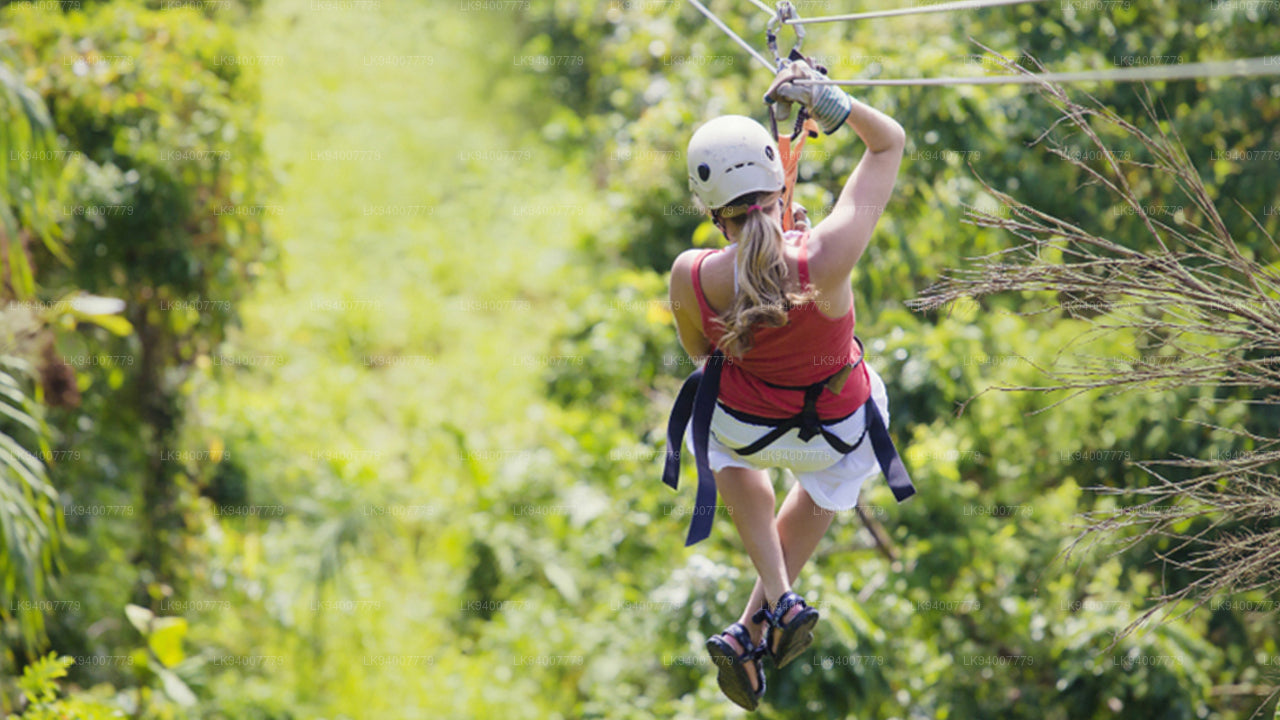
Cashew
Lakpura offers a variety of Sri Lankan cashew products, including dehydrated, garlic-flavored, devilled, and burnt cashew nuts, providing authentic local flavors for snacking or gifting.
Cashew
The cashew tree (Anacardium occidentale) is a tropical evergreen tree that produces the cashew seed and the cashew apple. The tree can grow as high as 14 m (46 ft), but the dwarf cashew, growing up to 6 m (20 ft), has proven more profitable, with earlier maturity and greater yields. The cashew seed is often considered a nut in the culinary sense; this cashew nut is eaten on its own, used in recipes, or processed into cashew cheese or cashew butter. Like the tree, the nut is often simply called cashew. The species is native to Central America, the Caribbean, and northern South America, including northeastern Brazil. Portuguese colonists in Brazil began exporting cashew nuts as early as the 1550s. In 2017, Vietnam, India, and the Ivory Coast were the major producers. The shell of the cashew seed yields derivatives that can be used in many applications including lubricants, waterproofing, paints, and, starting in World War II, arms production. The cashew apple is a light reddish to yellow fruit, whose pulp can be processed into a sweet, astringent fruit drink or distilled into liquor.
Etymology
Its English name derives from the Portuguese name for the fruit of the cashew tree: caju (Portuguese pronunciation: [kaˈʒu]), also known as acaju, which itself is from the Tupian word acajú, literally meaning "nut that produces itself". The generic name Anacardium is composed of the Greek prefix ana- (ἀνά-, aná, 'up, upward'), the Greek cardia (καρδία, kardía, 'heart'), and the New Latin suffix -ium. It possibly refers to the heart shape of the fruit, to "the top of the fruit stem" or to the seed. The word anacardium was earlier used to refer to Semecarpus anacardium (the marking nut tree) before Linnaeus transferred it to the cashew; both plants are in the same family. The epithet occidentale derives from the Western (or Occidental) world.
Habitat and growth
The cashew tree is large and evergreen, growing to 14 m (46 ft) tall, with a short, often irregularly shaped trunk. The leaves are spirally arranged, leathery textured, elliptic to obovate, 4–22 cm (1.6–8.7 in) long and 2–15 cm (0.79–5.91 in) broad, with smooth margins. The flowers are produced in a panicle or corymb up to 26 cm (10 in) long; each flower is small, pale green at first, then turning reddish, with five slender, acute petals 7–15 mm (0.28–0.59 in) long. The largest cashew tree in the world covers an area around 7,500 m2 (81,000 sq ft) and is located in Natal, Brazil. The fruit of the cashew tree is an accessory fruit (sometimes called a pseudocarp or false fruit).[1] What appears to be the fruit is an oval or pear-shaped structure, a hypocarpium, that develops from the pedicel and the receptacle of the cashew flower. Called the cashew apple, better known in Central America as marañón, it ripens into a yellow or red structure about 5–11 cm (2.0–4.3 in) long. It is edible and has a strong "sweet" smell and taste.
The true fruit of the cashew tree is a kidney– or boxing-glove–shaped drupe that grows at the end of the cashew apple. The drupe develops first on the tree, and then the pedicel expands to become the cashew apple.[1] The true fruit contains a single seed, which is often considered a nut in the culinary sense. The seed is surrounded by a double shell that contains an allergenic phenolic resin, anacardic acid—which is a potent skin irritant chemically related to the better-known and also toxic allergenic oil urushiol, which is found in the related poison ivy. Some people are allergic to cashews, but they are a less frequent allergen than tree nuts or peanuts. The cashew tree is native to northeastern Brazil, but the Portuguese took it to Goa, India between 1560 and 1565. From there, it spread throughout Southeast Asia, and eventually Africa.
Cashew nut and shell
Culinary uses for cashew seeds in snacking and cooking are similar to those for all tree seeds called nuts. Cashews are commonly used in Indian cuisine and Pakistani cuisine, whole for garnishing sweets or curries, or ground into a paste that forms a base of sauces for curries (e.g., korma), or some sweets (e.g., kaju barfi). It is also used in powdered form in the preparation of several Indian sweets and desserts. In Goan cuisine, both roasted and raw kernels are used whole for making curries and sweets. Cashews are also used in Thai and Chinese cuisines, generally in whole form. In the Philippines, cashew is a known product of Antipolo, and is eaten with suman. The province of Pampanga also has a sweet dessert called turrones de casuy, which is cashew marzipan wrapped in white wafers. In Indonesia, roasted and salted cashews are called kacang mete or kacang mede, while the cashew apple is called jambu monyet (lit. ‘monkey rose apple’).
In the 21st century, cashew cultivation increased in several African countries to meet the demands for manufacturing cashew milk, a plant milk alternative to dairy milk. In Mozambique, bolo polana is a cake prepared using powdered cashews and mashed potatoes as the main ingredients. This dessert is popular in South Africa. In Brazil, cashew fruit juice and the fruit pulp are used in the production of sweets, juice, alcoholic beverages, such as cachaça, and as a flour, milk or cheese.
The shell of the cashew nut contains oil compounds that can cause contact dermatitis similar to poison ivy, primarily resulting from the phenolic lipids, anacardic acid, and cardanol. Due to the possible dermatitis, cashews are typically not sold in the shell to consumers. Readily and inexpensively extracted from the waste shells, cardanol is under research for its potential applications in nanomaterials and biotechnology.
Production
In 2017, global production of cashew nuts (as the kernel) was 3,971,046 tonnes, led by Vietnam, India and Ivory Coast with 22%, 19%, and 18% of the world's total respectively (table). Benin, Guinea-Bissau, Cape Verde, Tanzania, Mozambique, Indonesia, and Brazil also had significant production of cashew kernels. In 2014, rapid growth of cashew cultivation in Ivory Coast made this country the top African exporter. Fluctuations in world market prices, poor working conditions, and low pay for local harvesting have caused discontent in the cashew nut industry. The cashew tree is cultivated in the tropics between 25°N and 25°S, and is supremely adapted to hot lowland areas with a pronounced dry season, where the mango and tamarind trees also thrive.[24] The traditional cashew tree is tall (up to 14 m) and takes three years from planting before it starts production, and eight years before economic harvests can begin. More recent breeds, such as the dwarf cashew trees, are up to 6 m tall, and start producing after the first year, with economic yields after three years. The cashew nut yields for the traditional tree are about 0.25 metric tons per hectare, in contrast to over a ton per hectare for the dwarf variety. Grafting and other modern tree management technologies are used to further improve and sustain cashew nut yields in commercial orchards.
Nutrition
Raw cashews are 5% water, 30% carbohydrates, 44% fat, and 18% protein (table). In a 100 gram reference amount, raw cashews provide 553 Calories, 67% of the Daily Value (DV) in total fats, 36% DV of protein, 13% DV of dietary fiber and 11% DV of carbohydrates. Cashews are rich sources (20% or more of the DV) of dietary minerals, including particularly copper, manganese, phosphorus, and magnesium (79-110% DV), and of thiamin, vitamin B6 and vitamin K (32-37% DV) (table).[25] Iron, potassium, zinc, and selenium are present in significant content (14-61% DV) (table).[25] Cashews (100 grams, raw) contain 113 milligrams (1.74 gr) of beta-sitosterol.
Buy Now Cashew
-
Rancrisp Burnt Cashew Nuts (450g)
Regular price $27.00 USDRegular priceUnit price / per$32.06 USDSale price $27.00 USDSale -
Revello Cashew Chocolate
Regular price From $1.24 USDRegular priceUnit price / per$1.47 USDSale price From $1.24 USDSale -
Ransaru Dehydrated Whole Cashew Nuts Pack
Regular price From $4.00 USDRegular priceUnit price / per -
Cashew Garden, Tangalle
Regular price $0.00 USDRegular priceUnit price / per














